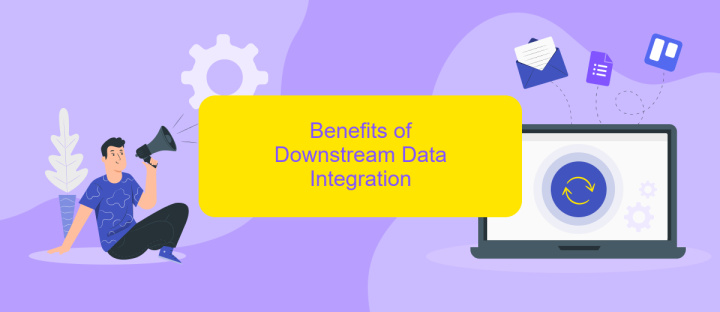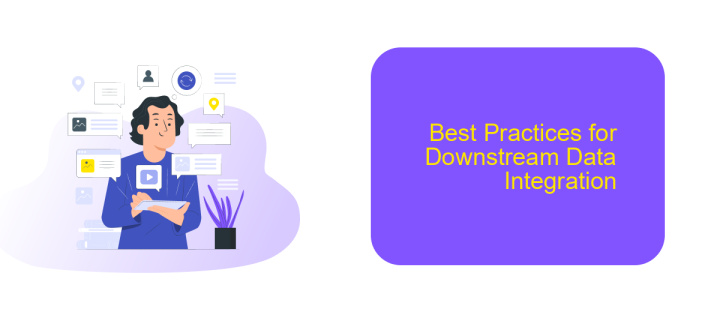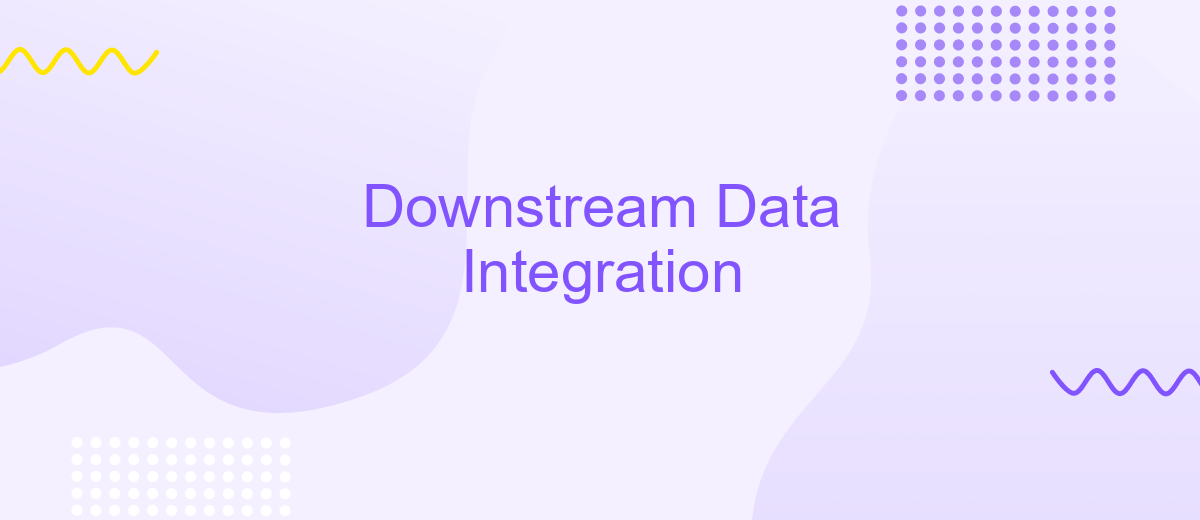Downstream Data Integration
Downstream Data Integration is a critical process in modern data management, enabling seamless data flow from initial collection points to end-user applications. By integrating data downstream, organizations can ensure consistency, enhance data quality, and derive actionable insights. This article explores the key methodologies, challenges, and best practices for effectively implementing downstream data integration in various business environments.
Introduction
Downstream Data Integration is a critical aspect of modern data management, enabling seamless data flow between various systems and applications. This process ensures that data is accurately and efficiently transferred, transformed, and loaded across different platforms, thereby supporting business operations and decision-making.
- Improved data accuracy and consistency
- Enhanced operational efficiency
- Better decision-making capabilities
- Streamlined business processes
Services like ApiX-Drive facilitate downstream data integration by providing tools that automate and simplify the integration process. ApiX-Drive allows businesses to connect multiple applications and systems without the need for extensive coding or technical expertise. This makes it easier to manage data flows, ensuring that the right information is available at the right time, ultimately driving better business outcomes.
Challenges of Downstream Data Integration

Downstream data integration poses several challenges, primarily due to the complexity of managing and synchronizing data from multiple sources. One of the main issues is ensuring data consistency and accuracy, as discrepancies can lead to incorrect insights and decision-making. Additionally, integrating data from disparate systems often requires significant time and resources, including specialized knowledge of various data formats and integration tools. This process can be further complicated by the need to comply with different data privacy regulations across regions.
Another challenge is the ongoing maintenance and monitoring of integrated data flows. Changes in source systems, such as updates or migrations, can disrupt established integrations, necessitating constant vigilance and adaptation. Tools like ApiX-Drive can help alleviate some of these issues by providing automated integration solutions that reduce manual effort and ensure real-time data synchronization. However, even with such tools, organizations must invest in robust data governance frameworks to manage access, quality, and security of integrated data effectively.
Benefits of Downstream Data Integration

Downstream data integration offers numerous advantages for organizations looking to streamline their data processes and enhance decision-making. By efficiently managing and integrating data from various sources, businesses can achieve a more cohesive and accurate data landscape.
- Improved Data Accuracy: Integrating data downstream ensures that information is consistent and accurate across all systems, reducing the risk of errors.
- Enhanced Decision-Making: With integrated data, decision-makers have access to comprehensive and up-to-date information, enabling more informed and timely decisions.
- Operational Efficiency: Streamlined data processes reduce redundancy and manual data entry, saving time and resources.
- Scalability: Downstream data integration allows businesses to easily scale their operations by adding new data sources without disrupting existing workflows.
- Cost Savings: By automating data integration tasks, companies can reduce operational costs and allocate resources more effectively.
Services like ApiX-Drive can facilitate downstream data integration by providing user-friendly tools to connect various data sources seamlessly. This enables businesses to automate workflows, synchronize data across platforms, and ensure that all systems are up-to-date with the latest information. By leveraging such services, organizations can unlock the full potential of their data and drive business growth.
Best Practices for Downstream Data Integration

Effective downstream data integration is crucial for ensuring seamless data flow and maintaining data integrity across various systems. It is essential to establish a robust framework that supports accurate data transfer and transformation. Start by identifying the key data sources and understanding the unique requirements of each system involved.
Implementing automation tools can significantly enhance efficiency and reduce the risk of errors. ApiX-Drive, for instance, offers a powerful platform for automating data integration processes, enabling real-time data synchronization across multiple applications without manual intervention.
- Ensure data consistency by implementing validation checks and data cleansing routines.
- Utilize secure data transfer protocols to protect sensitive information.
- Regularly monitor and audit data flows to identify and resolve potential issues promptly.
- Leverage scalable solutions like ApiX-Drive to accommodate growing data integration needs.
Incorporating these best practices will help maintain the integrity and reliability of your data integration processes. By leveraging advanced tools and following a structured approach, organizations can achieve seamless and efficient downstream data integration, ultimately driving better business outcomes.
- Automate the work of an online store or landing
- Empower through integration
- Don't spend money on programmers and integrators
- Save time by automating routine tasks
Conclusion
In conclusion, downstream data integration plays a crucial role in ensuring that data flows seamlessly across various systems and applications within an organization. By effectively managing and integrating data from multiple sources, businesses can achieve better decision-making, enhanced operational efficiency, and improved data accuracy. The implementation of robust integration strategies is essential for maintaining data consistency and reliability, which are critical for a company's success in today's data-driven world.
Services like ApiX-Drive provide valuable support in setting up and managing these integrations, offering a user-friendly platform that simplifies the process. With ApiX-Drive, businesses can automate data transfers, reduce manual intervention, and ensure that their systems remain synchronized. This not only saves time and resources but also minimizes the risk of errors, allowing organizations to focus on their core activities. As the landscape of data integration continues to evolve, leveraging such tools will be instrumental in maintaining competitive advantage and driving business growth.
FAQ
What is Downstream Data Integration?
Why is Downstream Data Integration important?
What are the common challenges in Downstream Data Integration?
How can you automate Downstream Data Integration?
What is the role of ApiX-Drive in Downstream Data Integration?
Do you want to achieve your goals in business, career and life faster and better? Do it with ApiX-Drive – a tool that will remove a significant part of the routine from workflows and free up additional time to achieve your goals. Test the capabilities of Apix-Drive for free – see for yourself the effectiveness of the tool.


